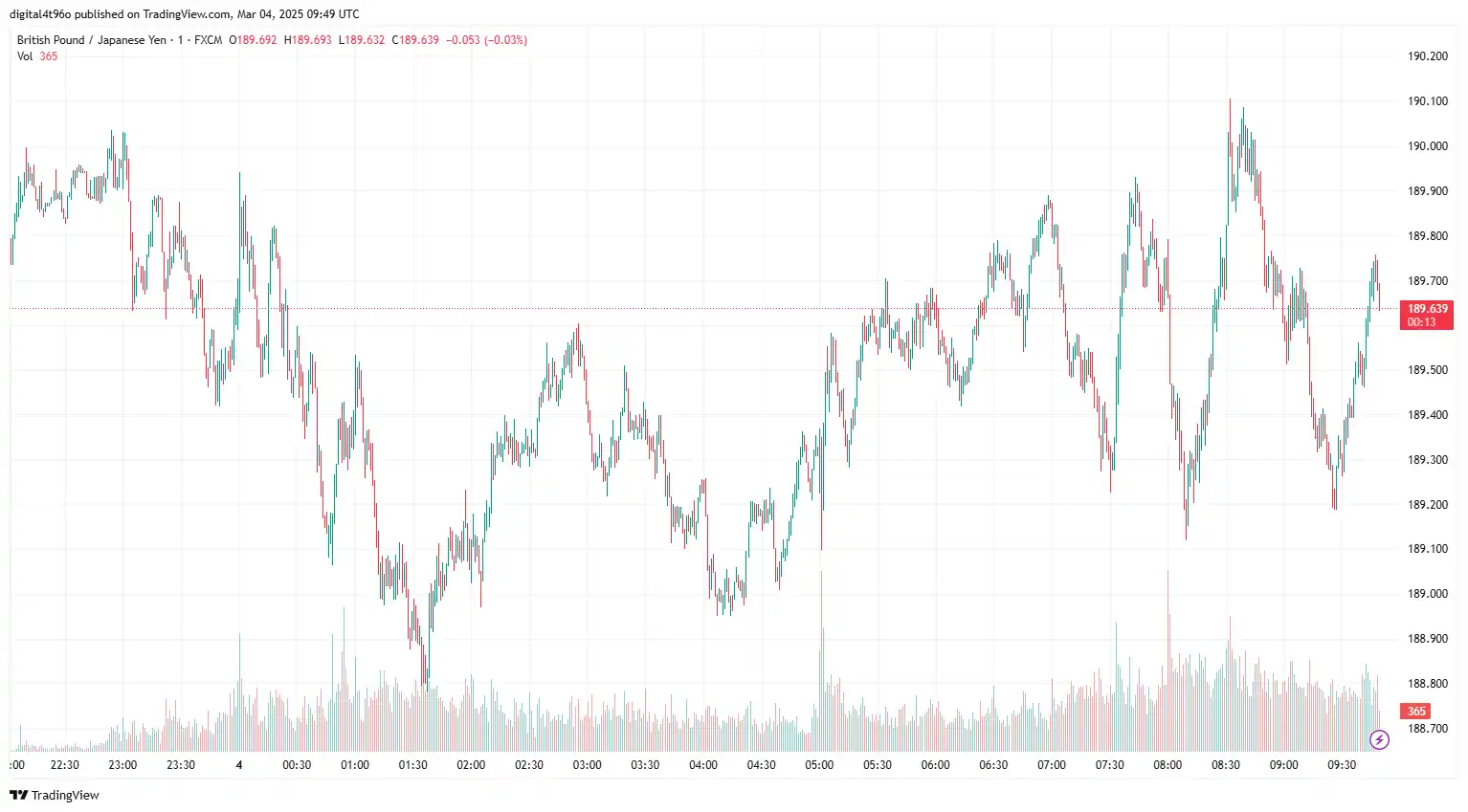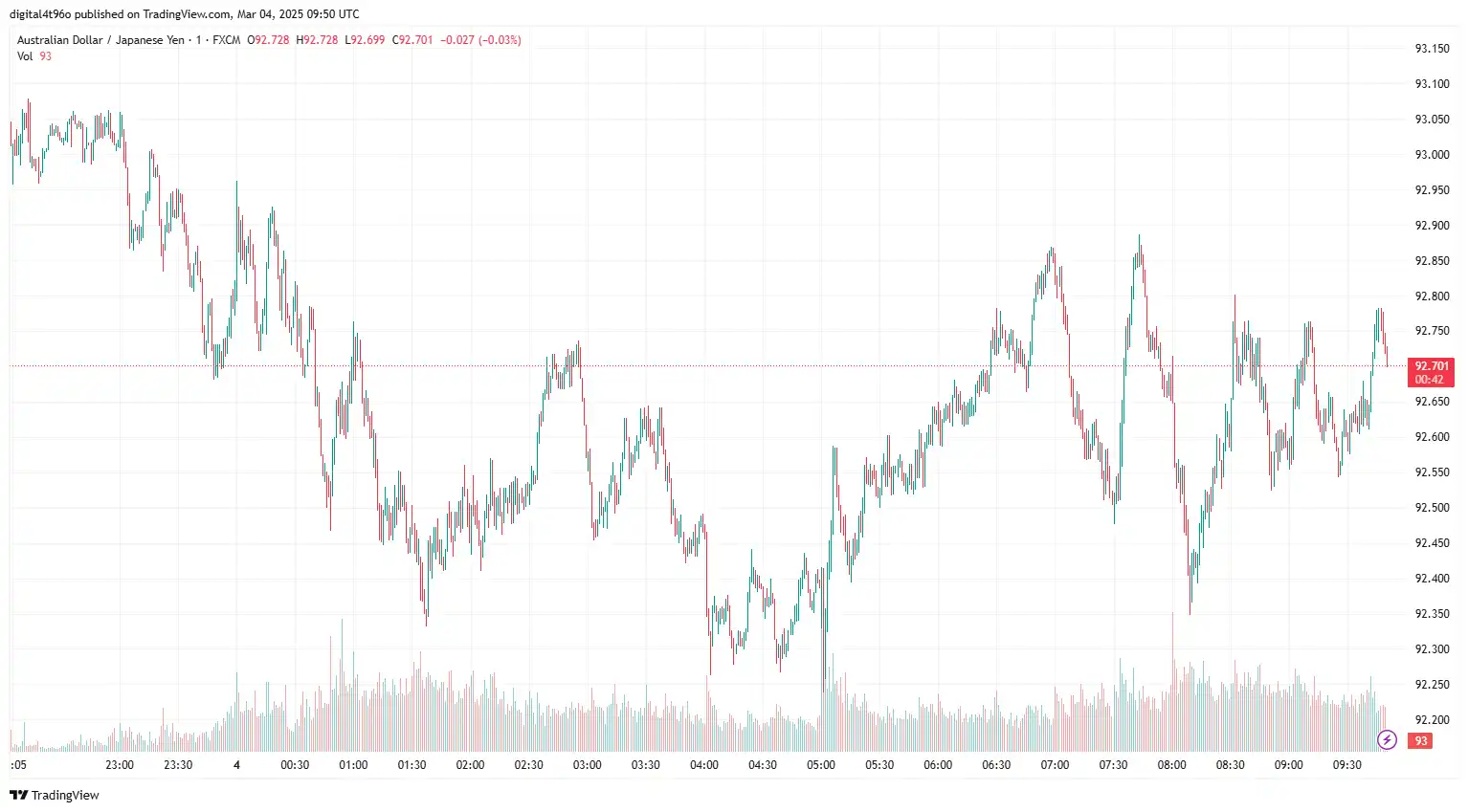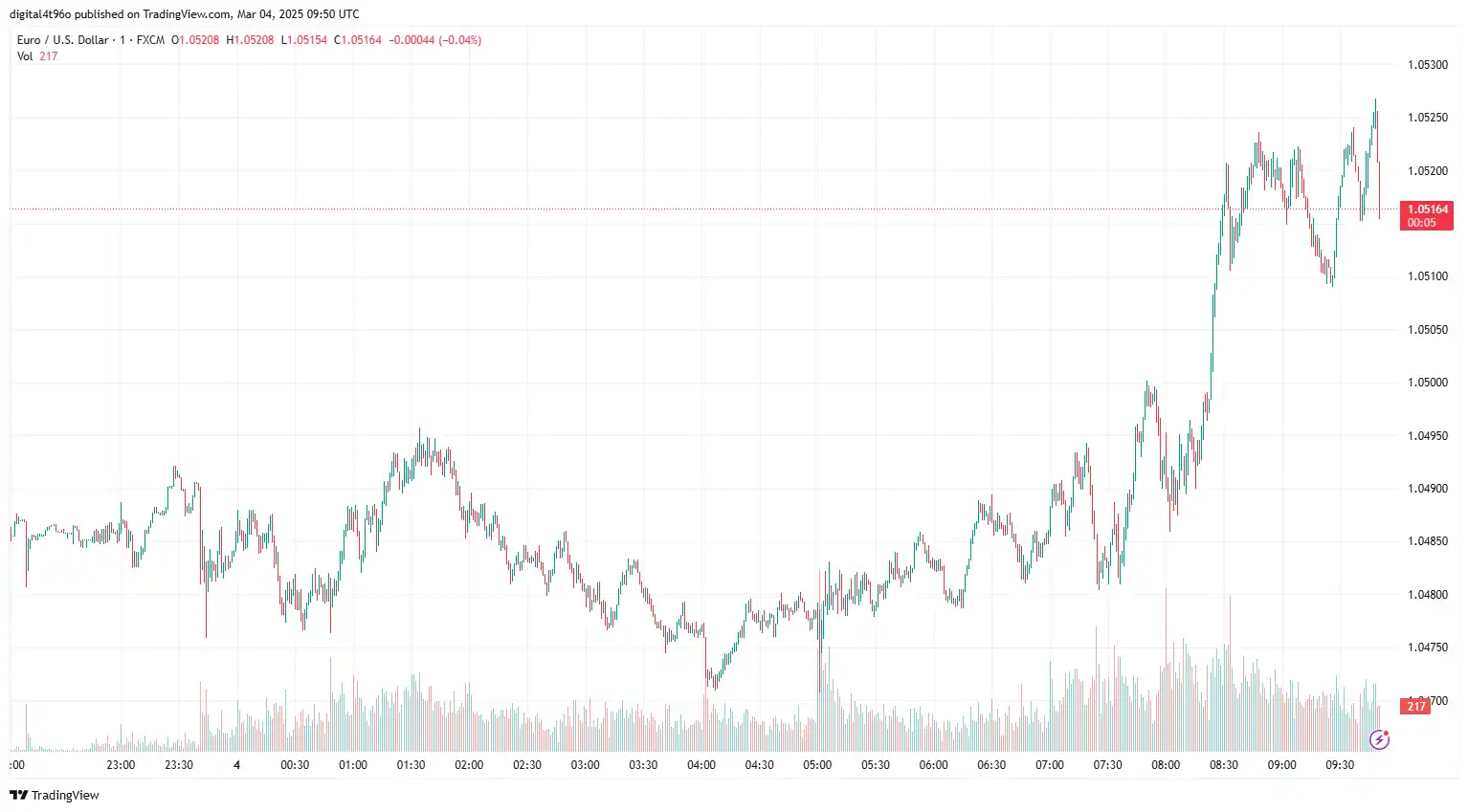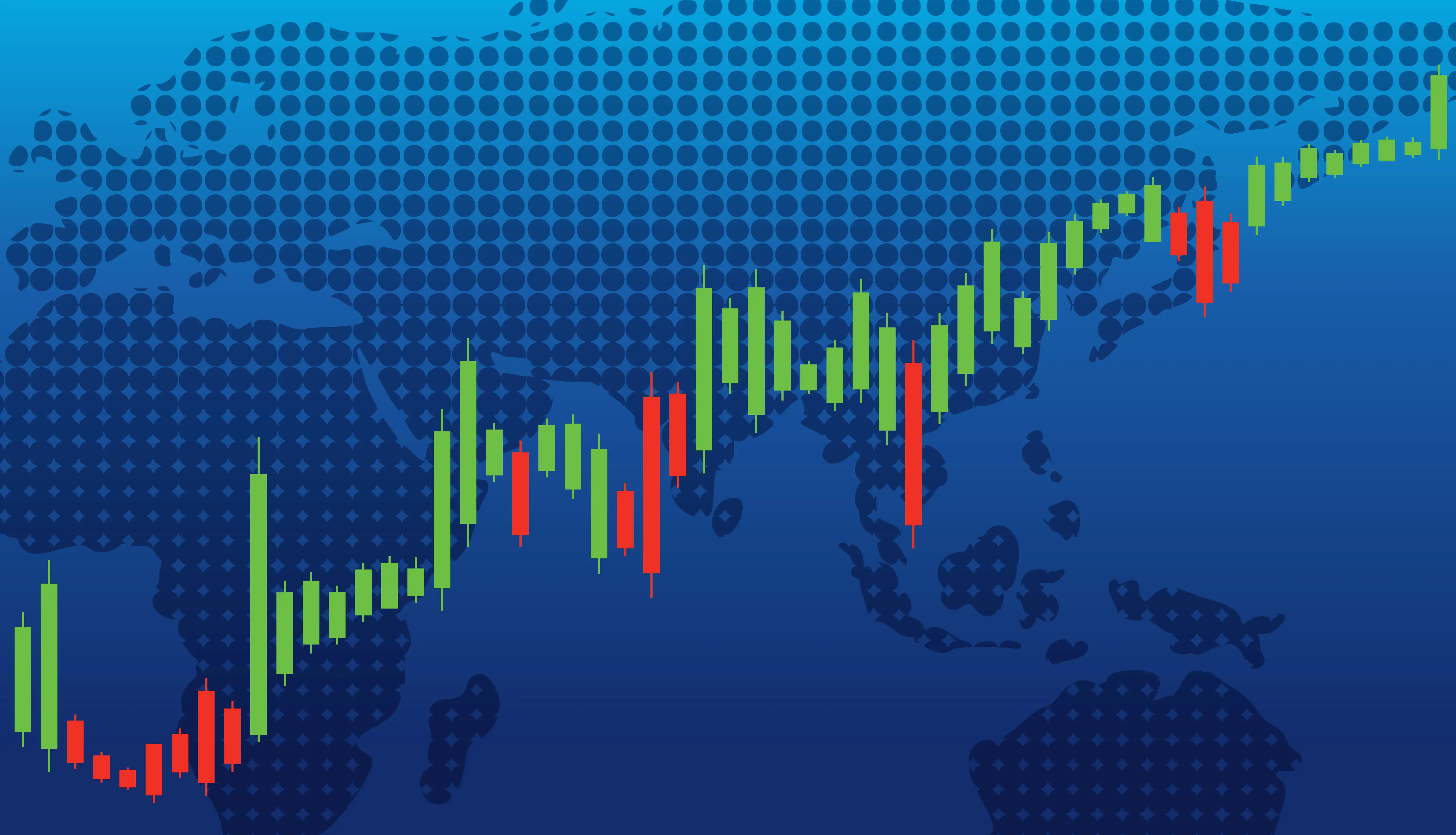GBP/JPY hovered near 189.36 following the report that France and the United Kingdom (UK) have offered a one-month truce in Ukraine. French President Emmanuel Macron and his foreign minister announced that France is suggesting a partial one-month ceasefire between Russia and Ukraine, indicating that European initiatives to strengthen support for Kyiv are intensifying amid unclear backing from the US. On the economic front, the UK Final Manufacturing PMI rose to 46.9 in February, slightly above the previous and expected figure of 46.4. UK Mortgage Approvals declined from 67K to 66K in February, as per market expectations. On the policy front, strong expectations that the Bank of England (BoE) will embark on a moderate policy-easing cycle could help limit the downside for the Pound Sterling.
On the other hand, increasing speculation that the Bank of Japan will raise interest rates bolsters the Japanese Yen (JPY). However, an unexpected increase in the unemployment rate and a decline in corporate capital expenditure for the first time in three years could limit the yen's upside. On Tuesday, Japan's Finance Minister, Katsunobu Kato, stated that the nation is not seeking to devalue its currency, reaffirming its "basic stance on currency policy" to US Treasury Secretary Scott Bessent. Meanwhile, Japan's Economy Minister Ryosei Akazawa mentioned that government intervention in the currency market occurs only during "speculative" movements. The unemployment rate in Japan unexpectedly rose from 2.4% to 2.5% in January, and Japanese companies cut spending on plants and equipment by 0.2% in the October-December quarter.
With no major UK economic releases scheduled today, any further development in the Ukrainian peace agreement will shape market sentiment around the GBP/JPY exchange rate.

AUD/JPY Sinks Amid Increased Risk Aversion
AUD/JPY weakened near 92.54 amid escalated concerns over a global tariff war, following the White House's confirmation that US President Donald Trump signed an order increasing tariffs on Chinese imports to 20%. In response, China's Ministry of Commerce announced additional tariffs of up to 15% on imports of key agricultural products, including chicken, pork, soy, and beef from the United States (US). China's NBS Manufacturing PMI increased to 50.2 in February, rising from 49.1 in January and surpassing the expected 49.9. Furthermore, the NBS Non-Manufacturing PMI climbed to 50.4 in February, up from 50.2 in January, exceeding the forecast of 50.3. Any potential shift in the Chinese economy could significantly influence the China-proxy AUD.
On the domestic front, Australia's Retail Sales, a measure of the country's consumer spending, rose by 0.3% month-on-month in January, compared to a decline of 0.1% in December, aligning with market expectations of a 0.3% increase. Australia's TD-MI Inflation Gauge decreased by 0.2% month-on-month in February, reversing a 0.1% increase in January. This marks the first decline since last August and follows the Reserve Bank of Australia's (RBA) decision to lower its cash rate by 25 basis points to 4.1% during its first monetary policy meeting of the year, indicating a continued slowdown in underlying inflation. However, the gauge rose annually by 2.2%, slightly below the previous 2.3% increase. Additionally, RBA's February Meeting Minutes remained cautious about the downside risks to the economy, seeing a great potential to reduce the rates.
The Japanese yen encounters challenges stemming from an unexpected rise in the unemployment rate and a decline in corporate capital expenditures for the first time in three years. Additionally, the hawkish sentiment surrounding the Bank of Japan's (BoJ) policy outlook, coupled with a risk-off mood and US President Donald Trump's threat regarding currency devaluation, could significantly impact the yen. Japan's unemployment rate unexpectedly rose from 2.4% to 2.5% in January, while corporate spending on plants and equipment decreased by 0.2% in the fourth quarter. The Au Jibun Bank Japan Manufacturing PMI registered at 49.0 in February 2025, slightly surpassing the expected 48.9. This latest result follows January's 10-month low of 48.7, marking the sixth consecutive month of declining output. Japan's Finance Minister, Katsunobu Kato, reiterated that the nation is not pursuing a currency devaluation, highlighting Japan's "fundamental approach to currency policy." Furthermore, Economy Minister Ryosei Akazawa remarked that the government intervenes in the currency market solely in reaction to "speculative" activity movements.
In today's session, the Reserve Bank of Australia (RBA) Meeting Minutes and developments in global trade policies will drive AUD/JPY's movements.

EUR/USD Gains Ahead of ECB Policy Minutes
EUR/USD rebounds near 1.0514, following growing hopes for a potential Ukraine peace deal. European leaders, including Ukrainian President Volodymyr Zelenskyy, agreed to devise a peace plan for Ukraine at a crucial summit in London over the weekend alongside United Kingdom Prime Minister Keir Starmer. Moreover, following the White House's announcement that President Donald Trump signed an order increasing tariffs on Chinese imports to 20%, China has responded by imposing tariffs on select US agricultural imports, effective March 10. The Canadian Prime Minister's Office stated that Canada will impose retaliatory tariffs on US imports commencing Tuesday if US tariffs come into force. Initially, Canada will introduce a 25% tariff on US imports valued at C$30 billion. Tariff imposition by the US on China and its neighbours has confirmed the potential for a global trade war, signalling concerns over the global economic outlook. Moreover, mixed US economic data has introduced market volatility. The ISM Manufacturing PMI fell to 50.3, below the anticipated 50.5 and down from January's 50.9. In contrast, S&P Global's final Manufacturing PMI for February surpassed expectations at 52.7, reflecting an improvement from the preliminary reading and indicating strength in the US manufacturing sector.
On the other hand, the euro faces headwinds as the market anticipates a 25 bps reduction in the Deposit Facility Rate to 2.5% in the European Central Bank (ECB) meeting on Thursday. On the economic front, German HICP rose by 2.8%, exceeding the 2.7% forecast. Month-on-month, HICP increased more swiftly at 0.6%, surpassing the anticipated 0.5%. In January, underlying inflation data fell by 0.2%. Spanish Manufacturing PMI climbed to 49.7 in February, after a drop to 50.9 in January, slightly lower than the market's expectation of a slight recovery to around 51.5. Italian Manufacturing PMI went up to 47.4 in February, following a slight increase to 46.3 in January, aligning with market predictions of a slight rise to about 46.6. French Final Manufacturing PMI improved to 45.8 points in February, up from 45.5 points in January, surpassing the market's expectation of a minor decline to 45.5 points. German Final Manufacturing PMI increased to 47.6 points in February from 47.3, matching the forecast of 46.1. The Eurozone Harmonized Index of Consumer Prices (HICP) rose by 2.4% year-on-year (YoY) in February, down from a growth of 2.5% in January, while the market expected a 2.3% rise. Meanwhile, the core HICP grew by 2.6% YoY in February, compared to a 2.7% increase in January, meeting the market expectations of 2.6%.
In the upcoming sessions, apart from the global trade concerns, investors will closely monitor the monetary policy statement and ECB President Christine Lagarde's press conference following the policy decision for fresh impetus on the EUR/USD exchange rate.

NZD/USD Rebounds Amid Trump's Tariff Threat
NZD/USD rebounded near 0.5623 amid concerns about an escalating trade war between the United States (US) and China, the two largest economies in the world. On Tuesday, the state-supported Global Times revealed that China's Commerce Ministry pledged to implement "necessary countermeasures" to protect China's legitimate rights and interests. The ministry strongly condemned the US decision to impose an additional 10% tariff on Chinese imports starting Tuesday, adding selling pressure on the China-proxy Kiwi. On the domestic front, the ANZ Business Outlook Index increased to 58.4 in February 2025, up from January's five-month low of 54.4. However, recent economic data from China could strengthen the Kiwi. China's Caixin Manufacturing Purchasing Managers' Index (PMI) increased to 50.8 in February, compared to 50.1 in January, exceeding market projections of 50.3. Additionally, official data released on Saturday showed the NBS Manufacturing PMI rose to 50.2 in February from 49.1, surpassing the forecast of 49.9. The NBS Non-Manufacturing PMI also advanced to 50.4 from 50.2, outpacing the anticipated 50.3.
The greenback stabilises amid rising demand for the safe-haven currency, fuelled by escalating global tariff tensions and mixed US data. The ISM Manufacturing PMI indicated that business activity in February was stable at 50.3, a decrease from the prior 50.9 and below economists' expectations of 50.5. In contrast, S&P Global reported that manufacturing activity in February grew to 52.7, increasing from 51.2 and surpassing forecasts of 51.6. In the upcoming sessions, Australia's Gross Domestic Product (GDP) for the fourth quarter (Q4), key US labour data, along with addresses by Federal Reserve's (Fed) Thomas Barkin and John William, will significantly influence the NZD/USD exchange rate.
Stay Ahead in the Currency Game
Whether you're a daily FX trader or handle international transactions regularly, our 'Currency Pulse' newsletter delivers the news you need to make more informed decisions. Receive concise updates and in-depth insights directly in your LinkedIn feed.
Subscribe to 'Currency Pulse' now and never miss a beat in the currency markets!
Ready to act on today’s insights? Get a free quote or give us a call on: +44 (0)20 7740 0000 to connect with a dedicated portfolio manager for tailored support.
Important: This blog is for informational purposes only and should not be considered financial advice. Currency Solutions does not consider individual investment goals, financial circumstances, or specific requirements of readers. We do not endorse or recommend any particular financial strategies or products discussed. Currency Solutions provides this content as is, without any guarantees of completeness, accuracy, or timeliness.
Important Disclaimer: This blog is for informational purposes only and should not be considered financial advice. Currency Solutions does not take into account the investment objectives, financial situation, or specific needs of any individual readers. We do not endorse or recommend any specific financial strategies, products, or services mentioned in this content. All information is provided “as is” without any representations or warranties, express or implied, regarding its accuracy, completeness, or timeliness.





